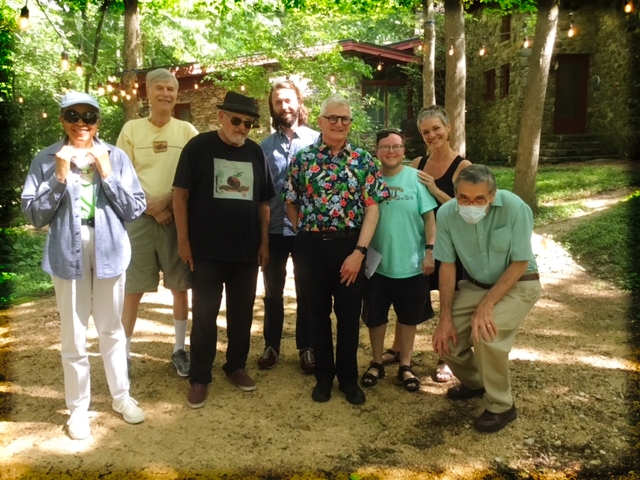On Saturday, May 28, 2022, nine members of the North Carolina Haiku Society met in person for the first time in over two years, since COVID times began in 2020.

From left to right, we have Teresa Church, Eric Pedersen, Bob Moyer, Matt Snyder, Dave Russo, Kai Rands, Kelly Moyer, and Richard Straw. Jean Earnhardt, our host, took the picture.
We met at Jean’s house near Chapel Hill, home to forty annual Haiku Holidays. We hope to renew that tradition in 2023. Until then, we’ll have occasional, smaller in-person meetings. Sign up for NCHS News to learn details about occasional gatherings.
At the May 28 gathering, Richard Straw gave a presentation about his recent experience with honkadori:
“In Japanese poetry, honkadori (本歌取り) is an allusion within a poem to an older poem which would be generally recognized by its potential readers.” | –Wikipedia
Richard created a special booklet for the occasion with some of his own examples of honkadori. He explained how different kinds of quotation and imitation can enable us to grapple with how good poems affect us the way they do.
Kelly Moyer (formerly Kelly Sauvage) and Brian Rickerts are co-editors of Failed Haiku, a senyru journal founded by Mike Rehling. Kelly and Bob shared their playful, imagistic approach to gembun and cherita, two haiku-like forms invented by the poet Ai Li.
Cherita (pronounced CHAIR-rita)
If you prefer a straightforward definition as a starting point, see the Cherita section of Larry Kimmel’s website.
If you prefer a more exploratory starting point, see the DNA (Origins) section of Ai Li’s Cherita site.
Gembun (pronounced GEM-boon)
See “The Original and Official Guidelines” at the bottom of the Gembun section of Ai Li’s Cherita site.
These forms are over twenty years old, but they seem to have become more popular recently in journals such as these:
- the cherita (cherita)
- Frameless Sky (cherita)
Hedgerow (gembun or cherita not explicitly mentioned but might be open to these forms) - Prune Juice (gembun)
Bob and Kelly encourage everyone to try these these two forms, either solo or as a collaboration.
